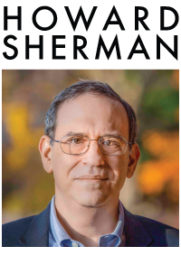 With three Romeo and Juliet productions currently underway in New York – on Broadway, Off-Broadway at Classic Stage Company and a return engagement of the company 3 Day Hangover‘s decidedly non-traditional depiction – and a new film version due out this coming Friday, it seems time to inaugurate “Pop Goes Shakespeare,” which might just as easily be called “Shakespeare Goes Pop.” Whatever your preference, my plan, in this Shakespeare-heavy NYC theatre season, is just to periodically ramble through an array of Shakespearean adaptations and appropriations in film, TV and music. You can expect my entries on Troilus and Cressida and Timon of Athens to be exceptionally brief.
With three Romeo and Juliet productions currently underway in New York – on Broadway, Off-Broadway at Classic Stage Company and a return engagement of the company 3 Day Hangover‘s decidedly non-traditional depiction – and a new film version due out this coming Friday, it seems time to inaugurate “Pop Goes Shakespeare,” which might just as easily be called “Shakespeare Goes Pop.” Whatever your preference, my plan, in this Shakespeare-heavy NYC theatre season, is just to periodically ramble through an array of Shakespearean adaptations and appropriations in film, TV and music. You can expect my entries on Troilus and Cressida and Timon of Athens to be exceptionally brief.
Considering there’s already rumblings among the purists about the admittedly peculiar decision by the new Romeo and Juliet film to have Downton Abbey‘s Julian Fellowes rewrite true Shakespeare into faux Shakespeare, it seems worthwhile to note how many different ways the Bard has already been retooled, rebooted and revised. Yet the couple always seems to survive to die another day.
Marketing for a 1930s film version, directed by George Cukor, with Leslie Howard, Norma Shearer and John Barrymore, went in for the hard sell – but was a bit cautious about any of that off-putting dialogue slipping out:
http://www.youtube.com/watch?v=5D6BxQwYQ4I
An authoritative voice-over and giant fonts ruled again in 1954 when Laurence Harvey (pre-Manchurian Candidate) played Romeo opposite British actress Susan Shentall as Juliet. She was apparently so successful in the role that she never appeared on screen again (and hadn’t appeared before this either):
In the tumult of 1968, as Vietnam raged and hippies sprang into full flower, Franco Zeffirelli’s classical take on the story, with 15 year old Olivia Hussey as the 14 year old Juliet, found favor with audiences. It didn’t hurt that, as both Tom Lehrer and Stephen Sondheim advised, it had “a tune you can hum” that made the pop charts. But here’s a sonnet:
Another youth oriented take came in 1996, when Baz Luhrman lent his hyperkinetic style to a modern day version of the story, with youthful Claire Danes (pre-CIA duty) and Leonardo DiCaprio (pre-iceberg) as our hero and heroine.
http://www.youtube.com/watch?v=gjxHdNxvySU
Want to get the kiddoes started on the Bard early? You might like some of the anthropomorphized animal versions of R & J. Perhaps you’d enjoy the story as puppy love, with seal pups, in the unfortunately titled Romeo and Juliet: Sealed With a Kiss:
Or if you can’t watch animated seals without worrying about the fate of real ones, perhaps you’d prefer the story set among garden gnomes (which are in no way endangered, so relax), accompanied by songs from Sir Elton John, and voiced by James MacAvoy and Emily Blunt:
http://www.youtube.com/watch?v=yPQyg8XtGsw
Turning to more adult versions, there’s the inevitable ultra low-budget zombified version of the story, Romeo and Juliet vs. The Living Dead:
http://www.youtube.com/watch?v=Sj27pNtnB2Q
The lunatics at Troma Films, the auteurs behind The Toxic Avenger films, manipulated the story to their own warped ends for Tromeo and Juliet:
Oh, and if you’ve ever been hungry for a martial arts/gangster interpretation, perhaps you aren’t familiar with the oeuvre of Jet Li and the late singer Aaliyah, who bonded in a film with the spoilery title Romeo Must Die in 2000:
On stage, while Tom Stoppard offered up truncated texts of Hamlet and Macbeth, Romeo and Juliet had to settle for my friends at the Reduced Shakespeare Company, who travestied the romance in a version that, by their standards, is rather long. It took two videos to include it all. Get on the ball, guys!
Musicians have been inspired by the romance of R & J, even into the rock era, although it was really just the names that were invoked rather than the story itself. Dire Straits’ version of a modern pair of lovers has become a standard, yielding numerous covers. Here are two takes: the original from Mark Knopfler and the boys, as well as Amy Ray performing the more muscular Indigo Girls version.
http://www.youtube.com/watch?v=QkfotbNqQgw
If Dire Straits’ street song serenade is too soft for you, then turn to Lou Reed’s tribute to the lovers in near apocalyptic 1980s NYC:
Too harsh? Then let’s shift back to the 1950s, for something infectious from The Reflections, about a couple who are “Just Like Romeo and Juliet.”
And gosh darn it: looks like that cutie Taylor Swift had to read Romeo and Juliet in school, leading her to write “Love Story.” It appears, however, that she never finished the play, since her retelling is a wholly happy one. The video director may not have read the play either – the art direction makes the story more like a cross between Pride and Prejudice and Wuthering Heights. But changing the period is done all the time in full versions, so I shouldn’t kvetch.
Many accounts of the current Broadway Romeo, Orlando Bloom, take note his modern, hip costuming, so one can’t help but imagine that director David Leveaux shares my affection for the minor hit “No Myth” by Michael Penn and its refrain, “What if I was Romeo in black jeans? What if I was Heathcliff, it’s no myth.”
I’d like to cap off our tribute to the doomed duo on a classy note, with a selection from Elvis Costello’s collaboration with the classical Brodsky Quartet, “The Juliet Letters,” suggested by the many young women who to this day leave letters for Juliet in present day Verona. This is one of my favorites from the album, “Taking My Life In Your Hands.”
P.S. What about West Side Story, I hear you cry. Yes, we all know it was suggested by Romeo and Juliet. I didn’t think you needed a reminder.



















